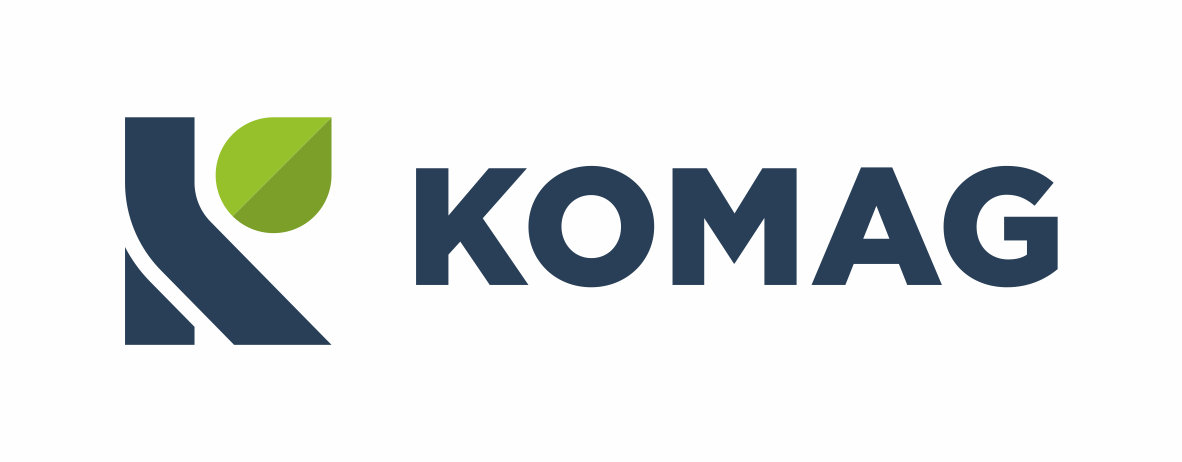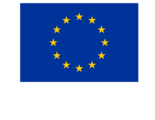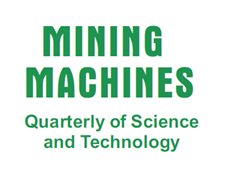Range of technical conditions of the hydraulic leg with gas accumulator carried out in longwall face
Mazurek K., Szweda S.
Virtual prototyping versus physical prototyping
Tokarczyk J.
Protection of hydraulic cylinders of powered roof support against dynamic overload
Gawliński M., Sysak Z.
Cutting longwall shearers for low seams design and operational requirements
Krauze K., Wydro T.
Quantitative assessment of rope safety
Hansel J.
Headgear wheel and drum linings
Hansel J.
The hydrophilic particles in washing products of trough pneumo-mechanical flotation machine
Lenartowicz M., Sablik J.
New Machinery Directive changes Directive 98/37/CE
Zając R.
Specificity of research project of Research Fund for Coal and Steel
Hordyniak E.
Range of technical conditions of the hydraulic leg with gas accumulator carried out in longwall face
Mazurek K., Szweda S.
S u m m a r y
Measurement systems for the gas pressure control as well as systems which enable to make up gas losses in the leg’s gas accumulator were discussed in the paper. Methodology of evaluation of influence of getting air to the leg on its elastic properties.
Virtual prototyping versus physical prototyping
Tokarczyk J.
S u m m a r y
Part of an extensive problem which is virtual prototy ping of technical means was discussed in the paper. Official definition of virtual prototyping was given. The objective of creation of physical prototypes (FP) and difficulties associated with its construction were presented, especially those of mining machines. Physical and virtual prototyping were compared. Scope of use and limitations of both methods were discussed.
Protection of hydraulic cylinders of powered roof support against dynamic overload
Gawliński M., Sysak Z.
S u m m a r y
Different design solutions of hydraulic supports used in the mining industry were given in the paper. Operational principles of safety valves used in the powered roof supports were discussed. Special attention was paid to a proper selection of operational fluid and taking it to a design of the system.
Cutting longwall shearers for low seams design and operational requirements
Krauze K., Wydro T.
S u m m a r y
Design, kinematic and power requirements for longwall shearer, considering mining and geological conditions during low seams mining by longwall method, were discussed. On the basis of these requirements a concept of cutting longwall shearer for low seams was developed and required changes indispensable to be made in a design of longwall shearer and AFC were determined. The analysis of those concepts enabled to select most favorable version of longwall shearer which would effectively operate in the faces from 1 to 1.6 m.
Quantitative assessment of rope safety
Hansel J.
S u m m a r y
Safety of ropeway installations depends endurance parameters of wire ropes. Computations of rope diameters still utilise a static and deterministic approach to the fatigue endurance and loading. The paper addresses the problem of quantitative assessment of rope safety in the context of cumulative rope wearing, assuming that endurance parameters and forces acting upon ropes are randomly variable. Besides, it is shown that:
numerical values of safety and reliability parameters can be determined in the function of the working conditions of the investigated plant,
a wearing model can be developed,
diagnostics can be related to safety features,
admissible wearing levels can be determined,
safe service life of wire ropes can be prognosticated.
Headgear wheel and drum linings
Hansel J.
S u m m a r y
New type headgear wheel and drum linings (the trademark modar® is copyright protected) were designed and engineered at The AGH University of Science and Technology in Kraków. The exclusive manufacturer of the several available versions of the headgear wheel lining modar® is the work cooperative SPOIWO in Radom. Three types of linings are available now: Modar R3/Mz, Modar R5/Kk, Modar M7/Wz. The linings modar® have all the certificates, licences and permits required by the law. Headgear wheel linings designated as Modar R3/Mz, featuring large and stable values of friction coefficient (frictional contact) are intended for headgear wheels and drums in mine hoists, cable railways, ski lifts and other rope transport installations. Linings designated as Modar R7/Wz are intended for drums and Koepe pulleys operated in the conditions of explosion hazard: for instance in underground mine excavations. Further- more, apart from the general characteristics, they display most advantageous electrostatic features and are slow-burning. Linings designated as Modar R5/Kk are intended for rope pulleys and might be employed in most rope transport installations. When employed, the fatigue endurance of wire ropes is significantly improved. The linings Modar R5/Kk might be applied to protect the pulleys in hoisting installations with the winders in the headframe or on the shaft level.
The hydrophilic particles in washing products of trough pneumo-mechanical flotation machine
Lenartowicz M., Sablik J.
S u m m a r y
The attendance of hydrophilic particles in products obtained from sampling trough pneumo – mechanical flotation machine washing power coal and coking coal has been investigated. The film flotation method and empiric relationship between contact angle and surface tension of wetting of coal has been used in order to appoint a percentage content of hydrophilic particles. It has been found that particles of coal flotating in the first order have the lowest surface tension of wetting and the lowest energetic nonhomogeneity and slight number of hydrophilic particles possess surface tension of wetting equal or higher than the surface tension of the zero contact angle (=0), probably on a mechanical curry (uplift) basis. What is more, the investigation shows that higher number of hydrophilic particles pass into the concentrate products in case of power coal (6,5; 16,5; 20%) than in case of coking coal (3; 5; 19%).To sum up, the analysis of the distribution of hydrophilic particles and surface tension of wetting in flotation products obtained in industrial IZ type flotation machine can be used for evaluation of the technology of flotation and the work performance of this machine.
New Machinery Directive changes Directive 98/37/CE
Zając R.
S u m m a r y
At the date of joining to EU in Poland the executory legal regulations implementing of so called “New Approach Directive”, which can facilitate free flow of goods on EU market, came into force. Machinery Directive is one of the important directives. Results of studies of group of specialists from European Commission on amendments to the said Directive, which were finished in May this year and resulted in issuing the completely new document No 2006/42/CE, were presented in the paper together with plans of changing Polish regulations in nearest future.
Specificity of research project of Research Fund for Coal and Steel
Hordyniak E.
S u m m a r y
Increasing trend on coal market, as regards both demand and production, became more firm than it was previously assessed. It was estimated that current growth will maintain till at least 2030. What countries, whose economy is based on mining industry, should do in such a situation? Is it reasonable to reduce mining production and to close mines to became dependant on external energy sources? Or it should be better to modernize the mining industry and take advantage of financial support offered by European Union through Research Fund for Coal and Steel which has been established to support coal and steel industries?
KOMAG Institute of Mining Technology
MISSION
Innovative solutions for economy.
VISION
Research and development centre of organizational and proprietary structure adapted to the market activity in the European Research Area and of the organizational culture creating a friendly climate for generating new ideas and realizing innovative activities, i.e. transforming new ideas into new products.
Read moreDesign
Designing of machines and equipment
Tests
Laboratory of Applied Tests
Certification
Assessment of products' conformity
Projects
Projects realized by the KOMAG Institute from European Funds
© 2026 KOMAG Institute of Mining Technology






 Badanie bezpieczeństwa wyrobów
Badanie bezpieczeństwa wyrobów Klaster Maszyn Górniczych
Klaster Maszyn Górniczych